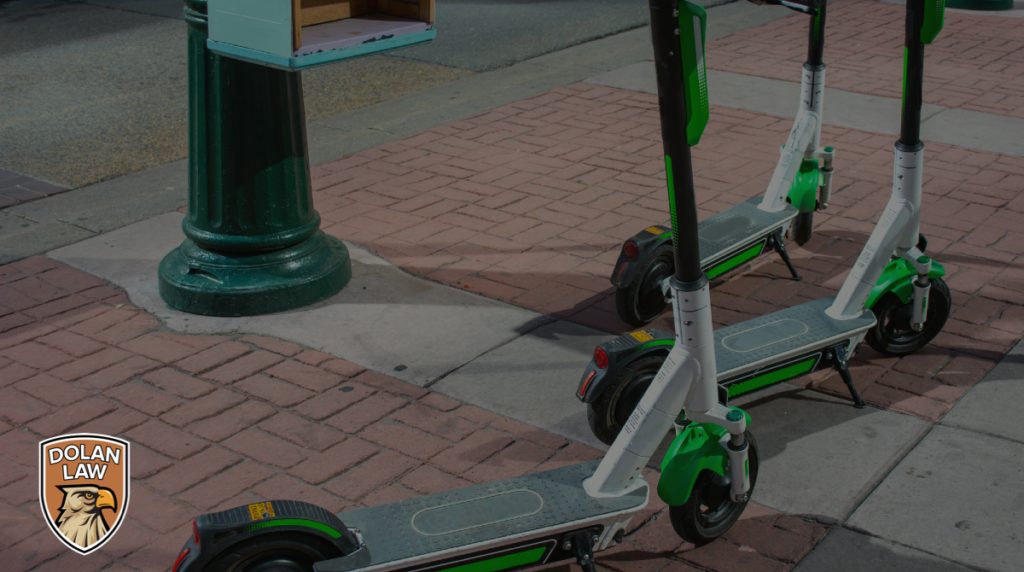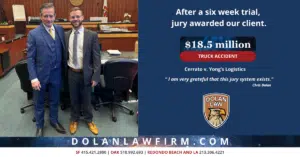Written By Christopher B. Dolan and Cioffi Remmer
Dom in San Francisco asks: Electric Scooter are everywhere. I see them on the street. I see them on the sidewalk. I see them on bike lanes. Some people ride alone, and others ride in pairs. Some people wear helmets while others don’t even bother. It all seems dangerous and arbitrary to me. What are the rules and regulations for electric scooters? Whatever they are. I have a feeling people are not following them.
Dear Dom,
Thank you for your question. With the popularity of alternative transportation, residents of San Francisco and other metropolitan areas are taking to bicycles, electric bicycles (e-bikes), and even faster growth – electric scooters (e-scooters) as their preferred mode of transportation. California has not been slow with recognizing the trend and implementing regulations to protect the public by passing legislation identifying the responsibilities of e-scooter riders and operators.
When e-scooters first hit the scene, riders, pedestrians, and motorists were confused about whether these speedy two-wheel people-movers were to be treated like bicycles or motorcycles in terms of roadway restrictions and rider safety. For example, before introducing e-scooters on city streets, California Vehicle Code section 21200–21213 concerned operation of bicycles. These sections regulated issues such as physical characteristics of bicycles, e.g., height of handlebar), safety attributes, e.g., brake requirements, lamp requirements, location of operation, e.g., bike lanes, roadway, etc., and operator safety apparel, e.g., helmets for riders under 18 years old.
The main issues that riders, motorists, and pedestrians alike want to know are:
- Are e-scooters are allowed to ride on sidewalks (which may pose a safety risk to pedestrians)?
- Are they restricted to bike lanes? Can they ride in the traffic lanes? and
- Are helmets required?
These are all similar issues that have been previously decided by the legislature in regulating bicycles.
For bicycles, it has been well established in California that individual cities or counties control rules regarding riding bicycles on sidewalks, pursuant to CVC 21206. For example, in San Francisco, the city made it illegal to ride a bicycle on the sidewalk if you are over the age of 13. (San Francisco Transportation Code Sec. 7.2.12). The City of Los Angeles only prohibits bike-riding on a sidewalk “in a willful or wanton disregard for the safety of persons or property.” (Los Angeles Municipal Code section 56.15).
Cyclists may ride in the traffic lanes, and must obey the traffic laws; however, they must use the bicycle lane if they are moving at less than the normal speed of traffic in the same direction, according to section 21208 of the Vehicle Code. As for helmets, Vehicle Code section 21202 requires a helmet for any bicycle rider under the age of 18.
Instead of dropping e-scooters into these multiple vehicle code sections along with bicycles, the legislature has specified and codified rules relating to e-scooters in a separate Vehicle Code section 21235. According to the Vehicle Code, e-scooters may not be operated on the sidewalk except as is necessary to enter or leave adjacent property. As we can see, the legislators did not leave this decision up to the different counties, cities, or municipalities.
The code becomes tricky when regulating the speed e-scooters may operate, and which types of highways or roadways e-scooters may be operated. E-scooters are limited to a maximum speed of 15mph, no matter what type of highway it is ridden on, pursuant to Vehicle Code sections 21235(b) and 22411. Regarding traffic lanes and bike lanes, e-scooters are permitted to be ridden in bike lanes and traffic lanes on roadways with a speed limit of up to 25 mile per hour. The legislator leaves it up to local authorities to authorize the operation of an e-scooter on Class II or Class IV bikeways on highways with a speed limit of up to 35 miles per hour. This means that in no circumstances are e-scooters allowed to be operated on highways with a speed limit above 35 miles per hour.
As for helmets, riders under the age of 18 years old must wear a helmet. Moreover, unlike bicycles, riders must have a valid driver’s license or instruction permit to operate an e-scooter. Undoubtedly, riders should familiarize themselves with California Vehicle Code and their local laws regarding riding e-scooters. Moreover, even though it may not be required by law if you are an adult, riders should always practice good safety and utilize a helmet.










